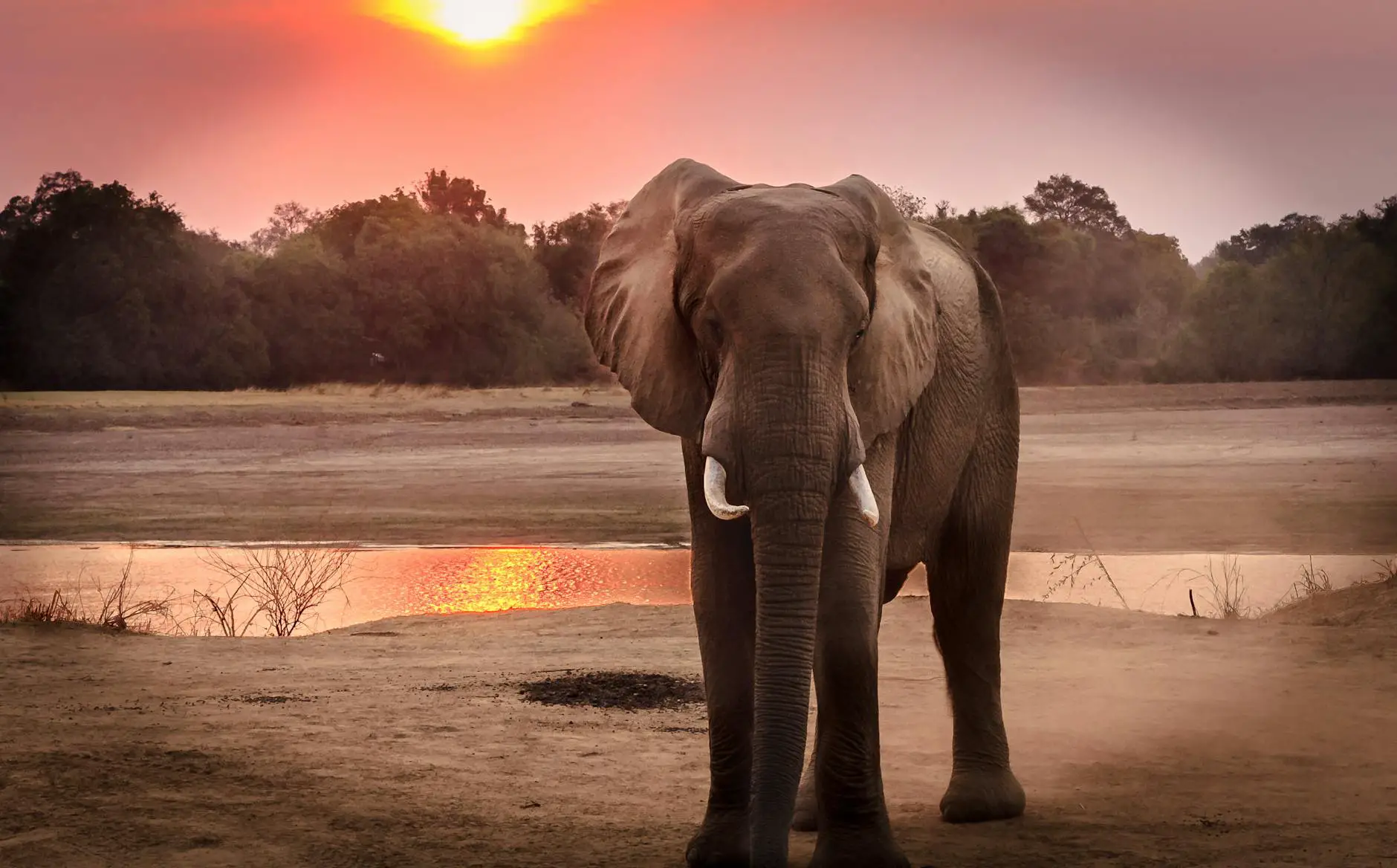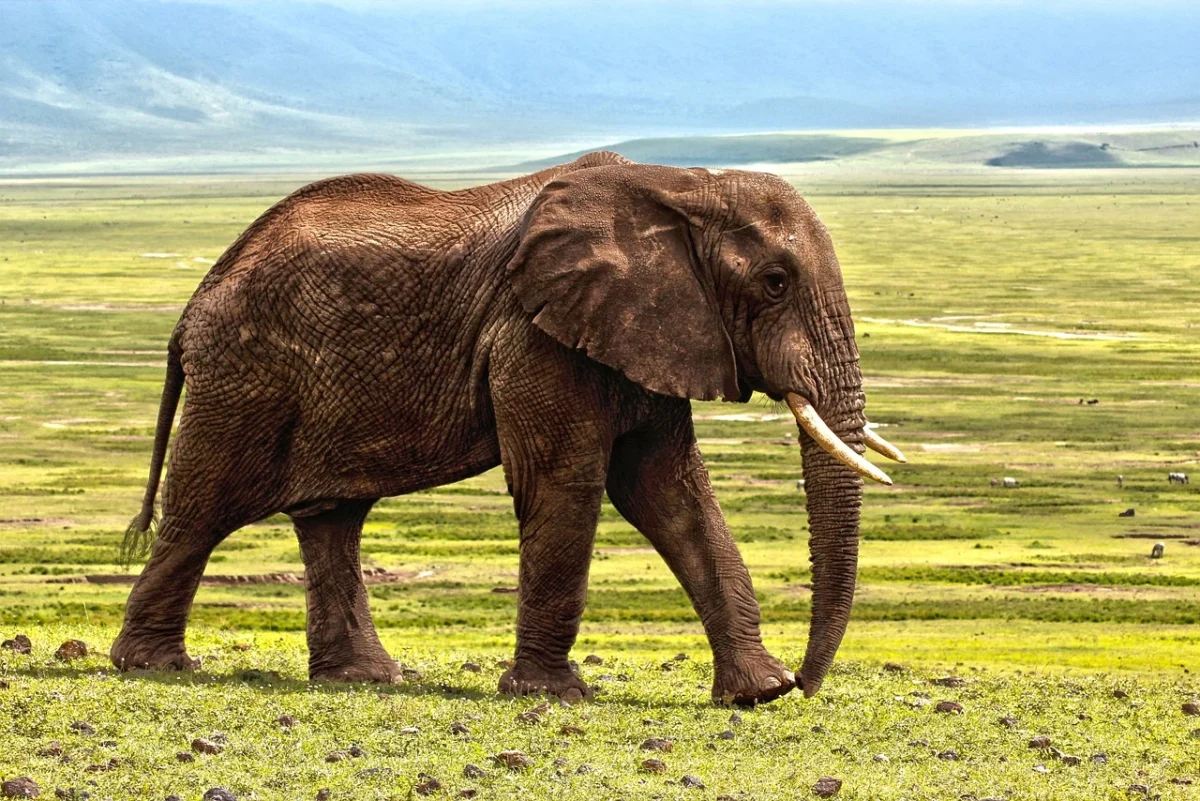Wild Animals
How much does a lion cost? ALL You Need To Know (2023)

Last Updated on July 28, 2023 by israel olaniran
Have you ever wondered how much does a lion cost? In this article, we will explore the different factors that influence the cost of owning an animal, specifically a lion. We will also discuss the legality of owning a lion as a pet, where you can purchase one, and the cost of feeding and caring for your furry friend.
Read: Do lions eat hyenas?
How much does a lion cost?
The cost of a lion can vary depending on various factors such as age, gender, and location. On average, the cost of a lion can range anywhere from $5,000 to $50,000. However, some rare breeds of lions can cost up to $140,000. The price tag for a lion cub is usually higher than that of an adult lion since they are easier to train and raise.
The process of acquiring a lion as a pet can be tedious, and the best way is to partner up with a zoo, as it is not possible to keep a pet lion in residential areas.
Read: How Much Does A Tiger Cost?
Factors that influence the cost of a lion
Several factors determine the cost of owning a lion. These include the age, gender, breed, and location of the lion. For example, a rare breed of lion, such as the White Lion, will cost more than a common breed. Gender also plays a role, with males costing more than females since they have a more prominent mane. Location is also a factor, with lions from certain regions being more expensive.
Read: How much does a giraffe cost?
How much does a lion cost in the US?
In the United States, owning a lion is legal in some states, but it is highly regulated. The cost of a lion in the US can range anywhere from $5,000 to $140,000, depending on various factors.
Read: How Much Does A Zebra Cost?
🐾 Are you a dog owner who wants to ensure your dog gets the absolute best in terms of nutrition?

Costs Involved in Owning a Lion
– Initial Acquisition Cost
Acquiring a lion is no small task, and it involves substantial expenses. Reputable breeders or facilities that ethically offer lions will charge a significant amount for the purchase of a lion cub. This initial cost can run into tens of thousands of dollars.
Read: how fast can a lion run?
– Legal and Regulatory Expenses
Navigating the legal requirements for lion ownership requires hiring legal experts and consultants, which adds to the overall expense. These professionals help prospective owners understand the complex regulations and ensure compliance.
Read: what eats lions?
– Habitat and Enclosure Setup
Lions need ample space to roam and thrive. Building a suitable and secure habitat or enclosure is essential for their well-being. This entails considerable costs for construction materials, fencing, and creating an environment that meets the animal’s needs.
– Feeding and Veterinary Care
Maintaining a lion’s health and well-being requires a proper diet and regular veterinary care. Feeding a lion is not only expensive but also a logistical challenge, as they require a diet that replicates their natural hunting habits.
– Training and Enrichment
Lions kept in captivity need mental and physical stimulation to prevent boredom and behavioral issues. Training and enrichment programs, often overseen by specialized professionals, are necessary but add to the overall cost.
– Insurance and Liability
Owning a lion carries significant liability risks. Ensuring the safety of both the public and the animal may necessitate obtaining substantial insurance coverage, which can be expensive.
Where can I buy a lion?
It is not easy to buy a lion. However, some breeders and private owners sell lions to the public. It is essential to do thorough research before purchasing a lion to ensure that you are dealing with a reputable and legal source. You can also find lions in zoos and animal sanctuaries.
Read: can lion climb trees?
Can you keep a lion as a pet?
It is not recommended to keep a lion as a pet due to safety concerns. Lions are wild animals and are not suitable for domestication. They can pose a significant threat to the safety of the owner and the general public. It is illegal to keep a lion in some states, and in other states where it is legal, permits are required.
SEE: Snake Poop Images
How much does feeding a lion cost?
Feeding a lion can be quite expensive since they require a diet of raw meat. On average, it can cost up to $10,000 a year to feed a lion, depending on the size and age of the animal.
Read: Do Foxes Eat Snakes?
Is it legal to own a lion?
Owning a lion is legal in some states in the US. However, it is highly regulated, and permits are required. It is essential to research and understand the laws and regulations in your state before purchasing a lion.
Read: what do lions eat?
In which states of the United States is it legal to own a lion?
The laws regarding owning a lion vary from state to state. In some states, it is illegal to own a lion, while in others, it is highly regulated. The following states allow the ownership of lions:
- Alabama
- Kansas
- Nevada
- North Carolina
- Oklahoma
- South Carolina
- Wisconsin.
Read: Do lions eat other lions?
What are the risks of owning a lion?
Owning a lion is a serious responsibility and comes with many risks. Lions are wild animals and can be unpredictable, even if they are raised in captivity. They can pose a danger to their owners and to the public if they escape or are mishandled. In addition, owning a lion is illegal in many places, and owners can face legal consequences if caught.
Final Thoughts On How much Does A Lion Cost?
In conclusion, owning a lion can be an expensive and highly regulated endeavor. While it may be tempting to have a lion as a pet, it is not recommended due to safety concerns. It is crucial to research and understand the laws and regulations in your state before purchasing a lion. Feeding and caring for a lion can also be quite costly, so it is essential to consider all factors before making a decision.
This post was written by Israel for Animal District
How much is a lion in Nigeria?
It is illegal to buy or sell lions, as well as other exotic animals, in Nigeria and many other countries due to conservation concerns and animal welfare issues.
How much does it cost to own a lion?
Owning a lion is not only illegal in many places but also highly impractical and dangerous. Lions are wild animals that require vast amounts of space, specialized care, and a natural environment to thrive. Additionally, owning a lion poses serious risks to public safety and is not suitable for private individuals.
Can I have a lion as a pet?
As mentioned earlier, keeping a lion as a pet is illegal and dangerous in most countries. Lions are wild animals with specific needs and behaviors that cannot be met in a domestic setting. They can become unpredictable and pose a significant threat to humans and other pets.
How much does a white lion cost?
White lions are extremely rare and considered a color variant of the African lion. As with other exotic animals, the sale and ownership of white lions are heavily regulated or prohibited in many countries. In places where ownership is allowed, prices can be exorbitant, often reaching hundreds of thousands of dollars. However, it’s crucial to reiterate that attempting to buy a lion, whether white or not, is not a responsible or ethical choice.
How much is a lion cub?
As with adult lions, buying a lion cub is generally illegal in most countries, and black market transactions of exotic animals are not only unethical but also support illegal wildlife trafficking. Conservation efforts and wildlife sanctuaries are essential to protect these majestic animals and their natural habitats.
How much does a lion weigh?
Adult male lions typically weigh between 330 to 550 pounds (150 to 250 kilograms), while adult females usually weigh between 265 to 400 pounds (120 to 182 kilograms).
Wild Animals
What Colors Are Elephant? ALL You Need To Know

Last Updated on February 14, 2024 by israel olaniran
When it comes to the animal kingdom, colors play an essential role in distinguishing various species and even conveying crucial messages. Among the magnificent creatures that roam the earth, elephants stand tall with their majestic presence.
While most people might think of elephants as being simply grey, there is more to their color palette than meets the eye. In this article, we delve into the intriguing world of elephant colors, exploring the hues that adorn these gentle giants.
Read: how much does an elephant cost?
What Colors Are Elephant?
Elephants exhibit a range of colors, with African elephants typically displaying shades of grey, ranging from light to dark, and sometimes even appearing brown. On the other hand, Asian elephants boast a lighter grey skin color, with occasional patches of pink in specific areas such as behind their ears and on their trunks.
Notably, baby elephants are born with a reddish-brown or orange hue, providing camouflage within their environment, which gradually darkens and transitions to their species’ characteristic color as they mature. These magnificent creatures, adorned in their distinctive hues, continue to captivate the hearts of people worldwide.

Elephant Species and General Characteristics
Elephants belong to two main species: African elephants (Loxodonta africana and Loxodonta cyclotis) and Asian elephants (Elephas maximus). These awe-inspiring creatures boast an impressive size, with thick, wrinkled skin, elongated trunks, and large, ivory tusks (in some cases). But what about their colors?
Read: how much does a lion cost?
Skin Color Variation in Elephants
At first glance, elephants might appear predominantly grey, but their skin colors can exhibit subtle variations. These colors are not simply for aesthetics; they serve important purposes in their natural habitats.
Read: how much does a tiger cost?
🐾 Are you a dog owner who wants to ensure your dog gets the absolute best in terms of nutrition?
African Elephants: Grey and Brown Shades
African elephants, the largest land animals on earth, are renowned for their distinguished grey skin. However, their skin color isn’t a simple, uniform shade. The skin of African elephants can range from light grey to dark grey, even appearing brown at times. This color variation not only aids in camouflage within their habitats but also helps regulate body temperature.
The earthy hues of African elephants are further enhanced by their love of dust and mud baths. These playful activities serve a dual purpose: cooling off in the scorching African sun and adding an extra layer of color as a protective barrier against the harsh elements.
Asian Elephants: Light Grey and Pink Patches
In contrast to their African counterparts, Asian elephants flaunt a lighter shade of grey. Their skin often appears smoother, with occasional patches of pink. The pink patches are more prominent in certain areas, such as behind their ears and on their trunks.
The unique pink patches on Asian elephants’ skin are thought to be a result of increased blood circulation beneath the skin. Just like African elephants, Asian elephants also enjoy dust baths, which help maintain their distinctive skin color while keeping pesky insects at bay.
Baby Elephants: Born with Different Colors
Curiously, baby elephants are not born with the same skin color as adults. Instead, they sport a reddish-brown or orange hue, which might surprise some. This distinct coloration is perfectly suited to the young ones, as it provides them with camouflage within their surroundings.
As baby elephants grow older, their skin gradually darkens and takes on the color typical of their species. This transformation is one of the many wonders of nature.
Factors Affecting Elephant Skin Color
Several factors influence the skin color of elephants, both young and old. Age, diet, and overall health can contribute to variations in skin color. Elephants that have access to a diverse and nutrient-rich diet tend to display healthier skin, while those lacking proper nutrition might exhibit paler shades.
Furthermore, the environment in which elephants live plays a crucial role. A healthy and vibrant habitat translates to healthier and more colorful elephant skin.
Human Interaction and Elephant Skin Color
Unfortunately, human activities have also impacted elephant populations and, consequently, their skin color. Pollution, deforestation, and climate change have led to habitat degradation, affecting the overall health of elephant herds. Poaching, driven by the illegal ivory trade, has also harmed elephant populations, making it vital to protect these magnificent creatures and their environment.
Read: how much does a bear cost?
Symbolism and Cultural Beliefs About Elephant Colors
Elephants hold significant cultural symbolism in various parts of the world. In some cultures, their colors are associated with prosperity, wisdom, and good fortune. These awe-inspiring animals have inspired numerous stories and beliefs, becoming symbols of strength and resilience.
Read: how much does a rhinoceros cost?
Conservation and Protection Efforts
As we marvel at the diversity of elephant colors and their significance, it becomes evident that preserving their populations and habitats is crucial. Conservation efforts, including the establishment of elephant sanctuaries and protected areas, play a vital role in ensuring the survival of these gentle giants for generations to come.
Final Thoughts On What Colors Are Elephant?
Elephants, with their magnificent presence and extraordinary colors, have captivated the hearts of people around the world. From the grey shades of African elephants to the lighter tones of Asian elephants, these majestic creatures never fail to amaze. As we learn more about their colors and the factors influencing them, let us also embrace the responsibility of safeguarding these incredible animals and their habitats.
Do all elephants have the same skin color?
No, elephants exhibit variations in skin color based on their species, age, and environmental factors.
Why do baby elephants have a different color than adults?
Baby elephants are born with a reddish-brown or orange color, providing camouflage within their surroundings.
What purpose do dust baths serve for elephants?
Dust baths help elephants cool off, protect their skin, and keep insects at bay.
What is the significance of pink patches on Asian elephants?
Pink patches on Asian elephants are thought to result from increased blood circulation beneath the skin.
How can we contribute to elephant conservation?
Supporting elephant sanctuaries, spreading awareness, and promoting responsible tourism are ways to contribute to their conservation.
What colors are real elephants?
Real elephants exhibit various colors, with African elephants typically displaying shades of grey, ranging from light to dark, and sometimes even appearing brown. Asian elephants have a lighter grey color with patches of pink in certain areas.
How many colors of elephants are there in the world?
There are primarily two colors of elephants: African elephants, which display grey and brown shades, and Asian elephants, which have a lighter grey color with pink patches.
Why are elephants black in color?
Elephants are not predominantly black; they are mostly grey with variations in shade. The darker color serves as camouflage and protection in their habitats.
Indian elephant color?
Indian elephants, a subspecies of Asian elephants, typically have a lighter grey skin color with occasional patches of pink.
What do elephants eat?
Elephants are herbivores and primarily feed on a variety of plant matter, including grass, leaves, fruits, and bark. Their diet may vary based on their habitat and seasonal availability of food.
-
Domestic Animals2 years ago
Why Do Dogs Look Away When You Eat
-
Domestic Animals6 months ago
Small But Smart: 10 Most Intelligent Small Dog Breeds
-
Wild Animals2 years ago
What Does Snake Poop Look Like? PICTURES & VIDEOS
-
Pet News6 months ago
Trending Now: Woman Raised A Panther Thinking It Was A Cat.
-
Domestic Animals8 months ago
Why Does My Cat Sleep On My Feet? Best Reasons
-
Insects7 months ago
Australian Stick Bug: ALL You Need To Know.
-
Domestic Animals1 year ago
Can Guinea Pigs Eat Oranges? ALL You Need To Know!
-
Domestic Animals2 years ago
Can Guinea Pigs Eat Pears? All You Need To Know (2023)





















